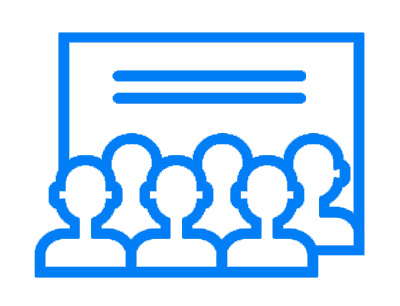Digital marketing is always changing. Less than a decade ago, brand Facebook pages—now ubiquitous among adventure parks—didn’t even exist. Google+ and Vine, once legitimate ways to reach audiences (and ones that marketers spent significant time trying to capitalize on), disappeared nearly as quickly as they arrived. Reaching the inbox in 2020 is vastly different from email best practices in 2010 or even 2015. And it’s important for businesses to keep up with the changes.
This constant evolution is especially true in digital advertising. Digital ad platforms a decade ago were primarily leveraged only by major brands such as Expedia and Nike and Walmart. Today, self-service interfaces give anyone access to the powerful targeting our modern internet-centric lives provide.
But just having access to these platforms isn’t enough. You can’t just do advertising—you have to do it right. You have to target the right audience on the right platform with the right message if you want to get your money’s worth.
THREE ELEMENTS
Before we begin, let’s quickly review the three elements required for any digital advertising campaign.
Audiences
Selecting an audience is the way you target potential customers. This is the group of people you want to see your ads.
Platforms
An ad platform is a system that has access to various audiences, delivers your ads to them, and shows you the results.
Messages
This is the actual advertisement. It could be text, an image, a video, or some blend of all three.
The success of a campaign depends on the right combination of these three elements. Here, we’re going to start with identifying the people you’re trying to reach and the ways you can reach them. We’ll cover platforms and messages in future articles.
AUDIENCES
You may have a perfectly crafted message on the most powerful platform, but if the audience there isn’t interested in what you have to say, you might as well flush that slice of your marketing budget right down the toilet.
Audiences can be sliced and diced in a hundred ways, but we’ll focus on four key methods used to target potential customers: intent, demographics, your database, and lookalikes.

Intent
Intent, in a marketing sense, is simply some form of behavior that suggests a person is closer to buying than most folks might be. Instead of starting from zero and convincing someone to stop thinking about whatever he or she was thinking about and consider visiting your adventure park, intent means you’re already on that person’s mind. There are dozens of actions someone could take to show intent, but let’s dig into three common types.
Example #1 Light Interaction
Let’s say someone visits your website but leaves without purchasing. While the reasons this person left will vary—distracted by a cat video, can’t afford your rates, etc.—relative to other anonymous internet users out there, this user had enough adventure-park-related intent to visit your website in the first place. That behavior alone makes this person, and others who do the same, a valuable audience to consider targeting.
Messaging people who have interacted with you is called “retargeting.” It’s the reason why, after spending a few minutes shopping for hiking boots during lunch, you may see ads for hiking boots for weeks afterward.
Example #2 Heavy Interaction
Now imagine that someone not only visited your site, but clicked “book now,” searched for rates on your calendar, or perhaps even made it to the checkout screen before leaving your site. While targeting people who simply visit your site might yield a larger audience, the group that gets closer to actually purchasing is much more valuable.
Retargeting this group may sound complicated to implement, but it usually isn’t. We’ll talk more about this in the next article when we discuss the ad platforms you may consider.
Example #3 Non-Interaction
Other people may signal intent without ever making it to your site. Sometimes, you can capitalize on the digital footprint they leave in other places. Here’s why.
Let’s say you run a ropes course near Salt Lake City. If someone searches Google for “Salt Lake City ropes courses,” this person has signaled intent. He or she is already sold on the idea of visiting a ropes course near Salt Lake City. He or she may have even circled a day on the calendar to go, and now simply needs to choose a place. This, of course, is an extremely valuable audience to get in front of. Advertising platforms like Google Ads know this, and you may be able to reach this audience. But because this audience is also valuable to others, it can also be one of the most expensive audiences to target.

Demographics/Interests
Intent is one thing, but how do you get people thinking about your adventure park in the first place? After all, if nobody knows you exist, they probably aren’t going to take the time to search you out.
Demographic and interest-based targeting is a method that has become more powerful now that so much of our lives and data are collected in our social profiles. Facebook, for example, knows a lot about its users: gender, age, lives in Minneapolis, loves riding bikes, listens to Beach Boys, and a hundred other insights. With demographic and interest-based targeting, any of that information can be used to target an ad at people who match chosen characteristics.
Keep in mind, because you may have no previous relationship with these people, demographic-based audiences are typically not as effective as intent-based audiences. Like starting a friendship, it takes time before someone knows, trusts, and is interested in your brand.
For Example:
For most adventure parks, location plays an important role. Some platforms, such as Facebook, allow you to draw a virtual radius around a zip code and target everyone within that radius. By combining location-based demographics with targeting based on age (youth, families, etc.) and interests (outdoors, hiking, etc.), you can create a more focused audience that has a greater chance of including a meaningful number of future customers.
Database
What many adventure parks may not realize is that the value of your email database goes beyond just being able to send your messages to their inboxes. You can reach them in other places, too.

Modern ad platforms, especially social platforms like Facebook, Google, and LinkedIn, have email addresses for hundreds of millions, if not billions, of people. By uploading your list of customer emails to these platforms, their technology can match those emails to users in their system and create a custom audience based on those matches. This audience can then be used to target your past customers through something other than email.
Email will likely be the most effective channel by a good margin, but this is still a great way to reach inactive email subscribers, say, or reach past guests from multiple angles when the message is important.
For Example:
You don’t need to target your entire database when using this method. Uploading certain segments, such as a list of families or groups, can help you better match the message to the audience once you get to that step. Keep in mind, though, that platforms set a minimum size for an audience, so you can’t get too narrow. Typically, a list of 1,000 people is enough to meet the minimum.

Lookalikes
Similar to database targeting, lookalike audiences start with a list of customers in your database that you consider close to ideal. They’re the type of customer you wish you could replicate—and that’s exactly the idea here. When you upload this list of your customers to an advertising platform, that platform uses advanced technology to identify the patterns, trends, and common attributes within that group. These platforms then look for other people in their systems who have similar combinations of attributes as those of your ideal customer.
Think of lookalike audiences as an automated, data-driven version of demographic targeting. Instead of trying to figure out the patterns on your own and then using your best judgment to target that audience, lookalike technology figures out those patterns for you and automatically finds people in its database who match.
Like demographic targeting, you’ll typically be starting the relationship with these people from scratch, so 10,000 people in a lookalike audience will almost always be much less valuable than 10,000 people in a database or intent-based audience. But it’s a relatively good way to turn up some likely new customers and help you expand your audience.
For Example:
Let’s say the list of ideal customers you pull from your database all have these attributes:
• ages 25-35
• have 1-2 kids
• live near Anaheim, Calif.
If you upload this list to Facebook, the lookalike audience it generates is likely going to include many other young families in Orange County. This is a simple example, but if you think about filtering through a complex list of customers using hundreds of datapoints, you’ll realize it can uncover thousands of potential guests that manual targeting may be missing.
NO SINGLE ANSWER
It’s important to remember that there is no one-size-fits-all answer for targeting. The dynamics of your market, the presence of competition, and the size of your margins will all play a huge role in how much potential there is for your adventure park to capitalize on digital advertising. Google Search Ads, for example, will be more expensive when there are more companies vying for the same keywords. Being the only adventure park in town may make that platform a better fit than a ropes course in a market with 30 other courses.
It’s important to note that some adventure parks may never see a return on investment (ROI) from even the most intent-heavy audiences. Or maybe the ROI is slim enough that it’s just not worth it compared to other ways to spend those marketing dollars. This is common and totally OK. Some may see great returns from every type of audience. This is typically rarer, but doable.
In each case, however, an audience alone is never enough. It requires smart distribution with a strong message. In part II of this series, that’s exactly what we’ll cover.
Gregg Blanchard is vice president of marketing for Inntopia, a CRM and e-commerce provider for the resort and recreation industries.






